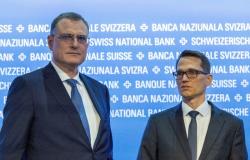After a period of decent returns and low volatility, sustainable bond funds struggled in the era of high interest rates. Now, as central banks like the ECB begin to cut rates, the outlook is improving.
Mara Dobrescu, head of fixed income analysis at Morningstar, explains that green bonds have a duration above average, which reflects the sensitivity of a bond to changes in interest rates. This can be painful when rates rise sharply, but benefits bonds when rates fall, she says.
“Investors looking to invest in green, social and sustainable bond funds should be aware of the biases these funds may introduce into their portfolio,” she adds.
What are green bonds?
Green bonds are issued to raise funds for the sole purpose of financing new or existing projects or activities that have a positive impact on the environment. These projects may focus on renewable energy, energy efficiency, waste management, sustainable transportation and other green initiatives.
Some $870 billion in new sustainable bonds were issued globally in 2023, bringing the outstanding amount at the end of the year to a record $4.4 trillion, spread across more than 43,000 individual bonds in the world. world, according to data from the nonprofit Climate Bonds Initiative.
Green bonds continue to represent two-thirds of this sustainable bond market.
However, there are other types of sustainable bonds: social bonds, for example, are intended to finance new projects and refinance existing projects with a positive social impact. Projects most often aim to support people on low incomes, the unemployed or other vulnerable groups of the population.
Sustainability-linked bonds (SLBs) have structural features, such as interest rates, that are linked to achieving sustainability goals.
Unlike green bonds, they are not linked to the implementation of a single sustainable development project. The proceeds of the bond issue can be used for general purposes, linked to an overall sustainability strategy with objectives that can be measured year after year. These bonds are the most “generalist” category within ESG fixed income, as they can include environmental goals, social goals, or a combination of both.
Funds and ETFs exposed to sustainable bonds
In Europe there are just under 300 bond funds and ETFs classified under Article 9 of the SFDR, the European Union regulation on sustainable finance which came into force in March 2021. These are the strategies that focus on a “clear sustainable goal” and are informally called “dark green” strategies.
During the first four months of the year, these funds recorded a net inflow of €4.2 billion, representing organic growth of 5.4%, higher than the universe’s growth of 3.3%. total fixed income funds domiciled in Europe. At the end of April, they reached €75 billion in assets under management.
Morningstar Ratings provide a useful indication of how these strategies have performed in the past (Star Rating) and how Morningstar analysts think they might perform in the future (Medalist Rating) relative to other strategies in the same category. .
Another characteristic of these funds is their greater exposure to the euro. An investor who decides to move from an allocation to traditional global bonds to an allocation exclusively to sustainable bonds would see their exposure to euro issues almost triple to 61%, at the expense of US dollar issues, which would fall to 26%.
Europe’s central role was confirmed once again last year: it was the largest source of sustainable debt instruments with a volume of $405 billion, representing 46% of the total for 2023. Latin America and the Caribbean saw an increase of 49% year-on-year. In contrast, anti-ESG sentiment affected U.S. volume, with a 38% decline.
At the country level, however, the 2023 rankings put China first with $83.5 billion in green bonds issued, followed by Germany with $67.5 billion and the United States with 59.9 billions of dollars.
Green and sustainable bond funds tend to allocate more money to corporate bonds, particularly in the financial sector, and quasi-sovereign bonds, at the expense of traditional government bonds. “This can make them more difficult than conventional bond products when credit markets collapse,” warns Morningstar’s Mr. Dobrescu.
Governments issue bonds for trains and houses
According to the GSS Bond Report analysis carried out by MainStreet Partners, a global record of green sovereign bond issuance was reached in 2023, exceeding $160 billion. “Clean transportation is the sector most financed by government issuers, representing to date 43% of the cumulative volume emitted since 2012, more than three times more than the category most financed by the rest of the market, renewable energies” , indicates the study.
The 2018 Belgian green bond partly financed the rail system, while in France the revenue was partly spent on tax exemptions for renewable energy and biodiversity projects. In Asia, on the other hand, in response to increasing urbanization, green bonds are often used to finance sustainable housing projects.
Sustainable bond funds are still in their infancy
Driven by institutional investors, the green bond market is expected to experience continued growth in the years to come. Investors should pay attention to the quality of each issue and be wary of marketing promises.
Selectivity and transparency ensure that the most relevant and impactful green projects receive the necessary funding. The market is still in its infancy and is rife with greenwashing, which is why thorough research on issuers is crucial for investors.
© Morningstar, 2024 – The information contained herein is for educational purposes and provided for informational purposes ONLY. It is not intended and should not be considered as an invitation or encouragement to buy or sell the securities mentioned. Any comments are the opinion of the author and should not be considered a personalized recommendation. The information in this document should not be the sole source for making an investment decision. Be sure to contact a financial advisor or financial professional before making any investment decisions.







